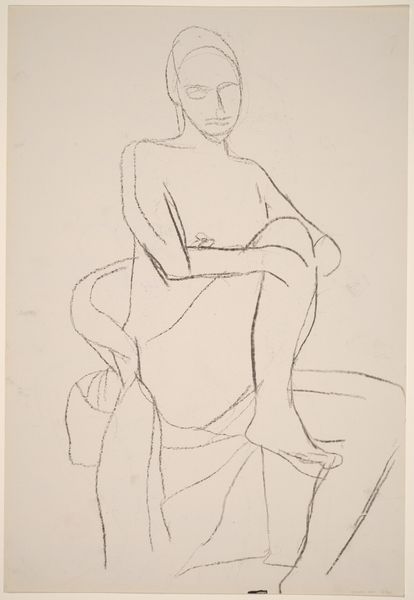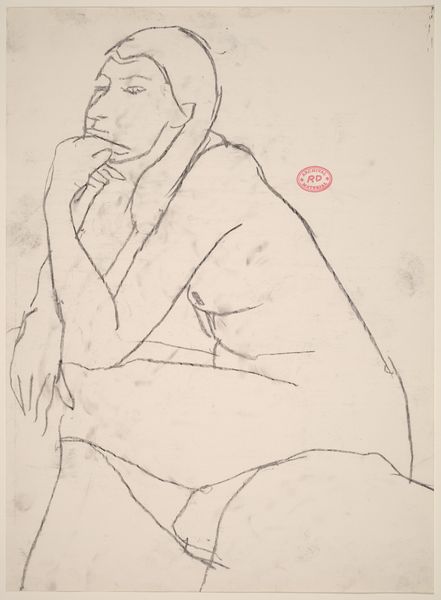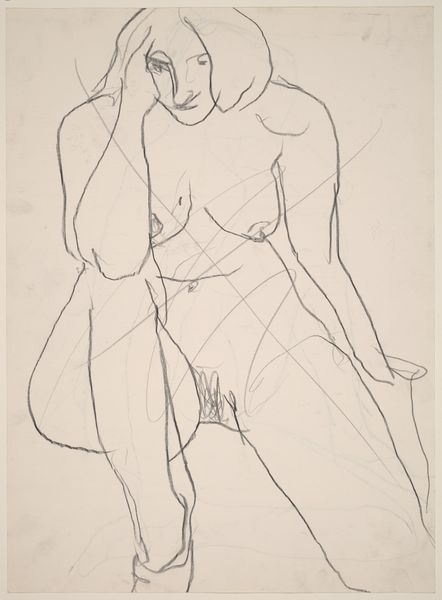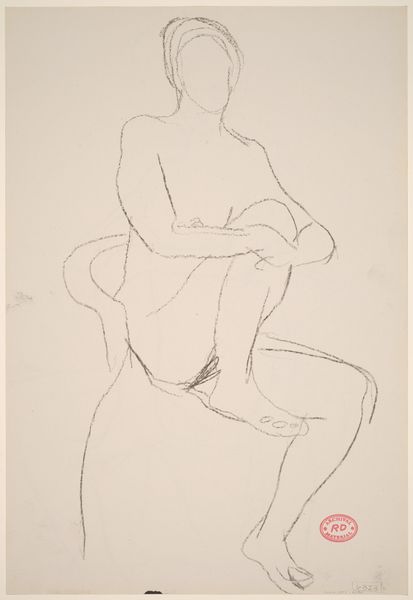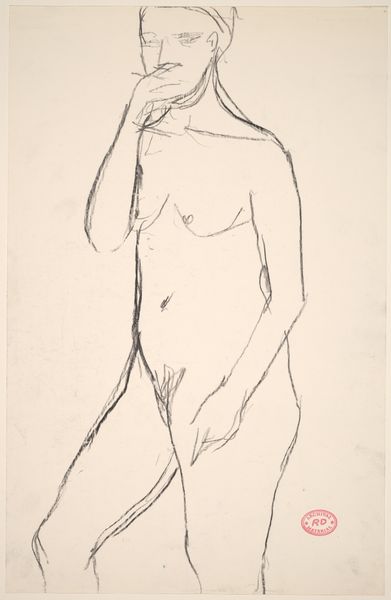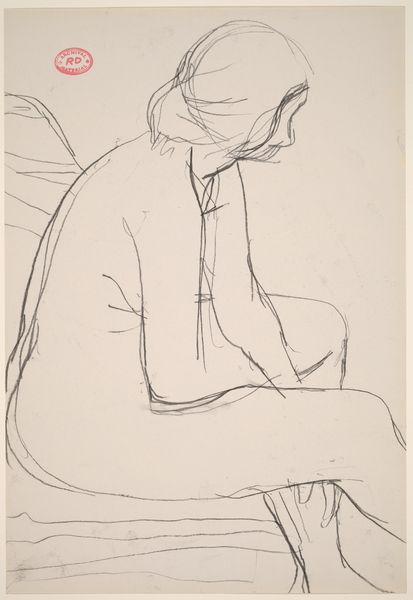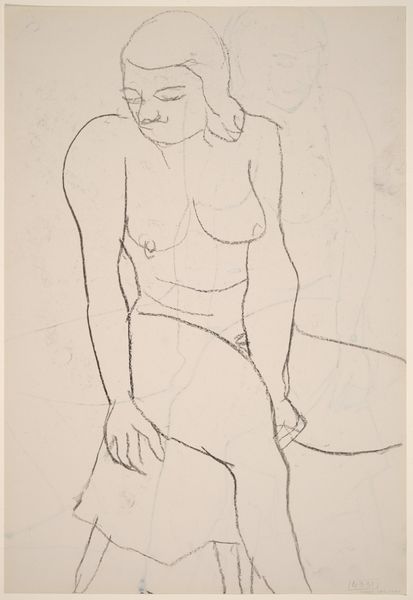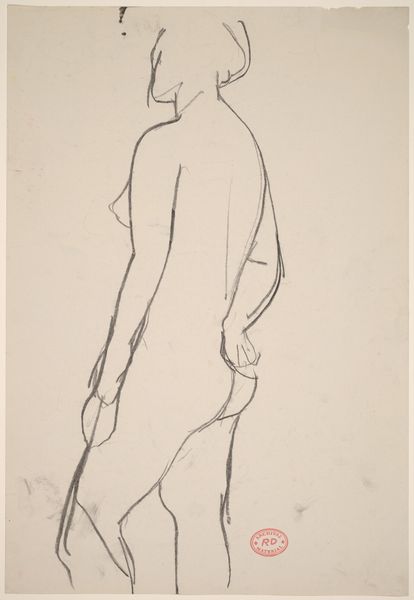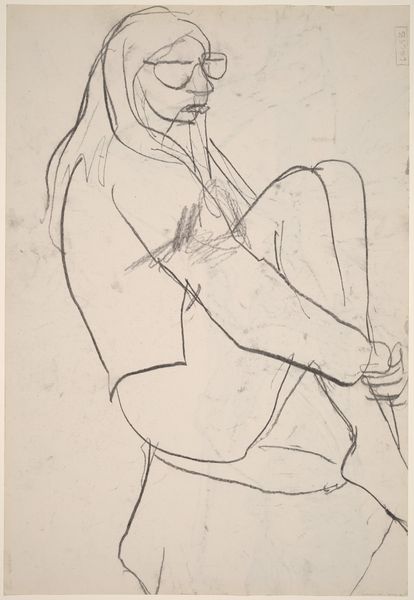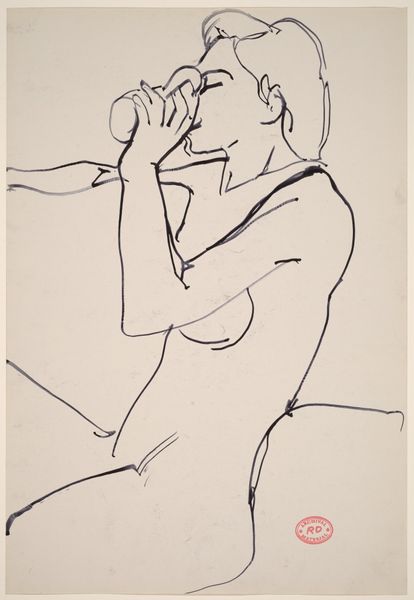![Untitled [seated nude resting her arms on her crossed leg] by Richard Diebenkorn](/_next/image?url=https%3A%2F%2Fd2w8kbdekdi1gv.cloudfront.net%2FeyJidWNrZXQiOiAiYXJ0ZXJhLWltYWdlcy1idWNrZXQiLCAia2V5IjogImFydHdvcmtzLzFkY2VlMzgwLWJiNGUtNDc4MC1hODE1LTBkZWQ5ODNkYWNlOC8xZGNlZTM4MC1iYjRlLTQ3ODAtYTgxNS0wZGVkOTgzZGFjZThfZnVsbC5qcGciLCAiZWRpdHMiOiB7InJlc2l6ZSI6IHsid2lkdGgiOiAxOTIwLCAiaGVpZ2h0IjogMTkyMCwgImZpdCI6ICJpbnNpZGUifX19&w=3840&q=75)
Untitled [seated nude resting her arms on her crossed leg] 1955 - 1967
0:00
0:00
drawing, pencil
#
portrait
#
drawing
#
ink drawing
#
pencil sketch
#
bay-area-figurative-movement
#
pencil drawing
#
pencil
#
nude
Dimensions: overall: 27.9 x 21.6 cm (11 x 8 1/2 in.)
Copyright: National Gallery of Art: CC0 1.0
Editor: Here we have Richard Diebenkorn's "Untitled [seated nude resting her arms on her crossed leg]," created sometime between 1955 and 1967, employing a simple pencil on paper. There's a casual intimacy in the lines. How might we decode the essence of this drawing? Curator: The reductive quality of the line is what first strikes me. Note the absence of detail, the emphasis on contour over volume. How does the interplay between the positive space occupied by the figure and the negative space around it inform your perception? Editor: It gives it a very airy feel, like she isn't really sitting, but floating. The lines are very simple, but evocative. The lack of shading suggests an interest in pure form? Curator: Precisely. The medium itself—pencil—facilitates this purity. Observe how Diebenkorn uses the subtle variations in pressure to define the figure's form, rather than relying on chiaroscuro. What effect does this linear quality have on the overall composition? Editor: It emphasizes the two-dimensionality of the drawing, right? Less an attempt to render the body realistically, and more about capturing its essence through line. Curator: Precisely. It is this reduction to essential lines and shapes that transcends mere representation, approaching a conceptual ideal of form. Editor: It's fascinating how much information can be conveyed with so little. It really makes me think about the power of suggestion in art. Curator: Indeed. The suggestive nature of these lines is critical to the viewer's active engagement with the artwork. It's an invitation to participate in its very creation, within the mind’s eye.
Comments
No comments
Be the first to comment and join the conversation on the ultimate creative platform.
